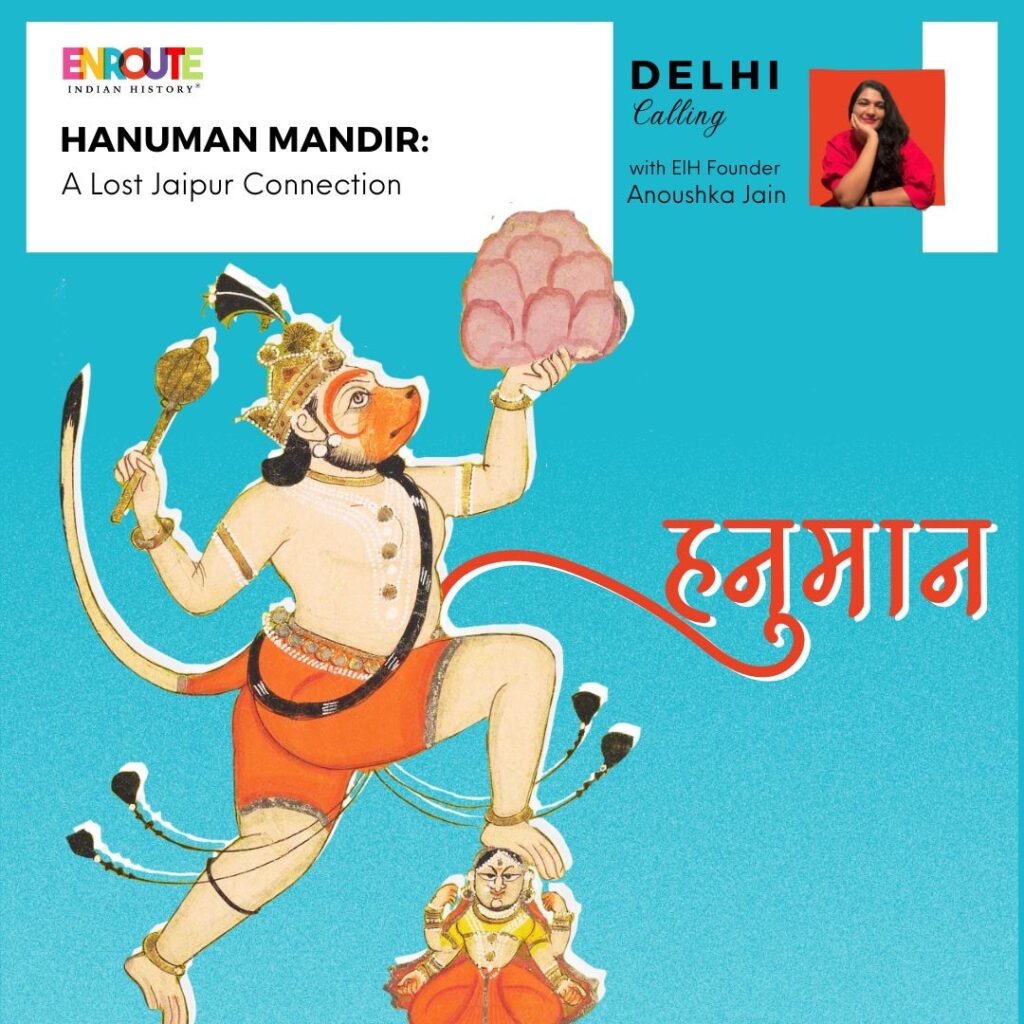
From Founder’s Desk
Anoushka Jain
It was a hot May morning in Delhi, when summer has finally announced its grand arrival and will torture you with skin ailments and fatigue as a gift from the lord of sun. The EIH team decided to conduct an extensive heritage mapping in Central Delhi particularly at the Barakhamba Road. The prime road of the city has several heritage buildings of cultural importance such as the Indian Coffee House, the state emporiums, and the Hanuman Mandir.
Heritage in India has a deep religious tone that polarizes the viewpoint to favor one of the major or minor religious narratives. It is here that an unbiased history intervention is needed to reflect on the period of stability and conflict to understand the cultural conversations of the past. One such unsuspecting site which has just the right touch of amalgamation between Hindu and Muslims is the religious site of ‘Hanuman Mandir’ the temple of Monkey God.
History of Hanuman Mandir
Hanuman Mandir is a landmark site at Babakharak Singh Marg. The complex was built under the reign of Mughal Emperor Akbar whose reputation of being tolerant and promoting syncretic culture is legendary. He had employed several Rajput rulers under his rule for their excellent diplomacy and swordsmanship in battlefields. Much of the present day New Delhi area was under the rulers of Jaipur as a form of ‘jagir’ or land grant under the Mughals. There were several villages under this jagir which were used to collect taxes by the Maharajas of Jaipur. The names of villages Jaisinghpura, Madhopur and many more villages named after the Jaipur rulers. It was as late as the 20th century that the area was sold to the British Raj who needed large tracts of land to build a new city which came to be known as ‘New Delhi’.
It was the famous Maharaja Man Singh I of Amer (a city near Jaipur in the 16th century) who built the Hanuman Mandir and dedicated it to the monkey god. The temple was again reconstructed in 1724 by Maharaja Jai Singh who also built Jantar Mantar under Mughal ruler Muhammad Shah ‘Rangeela’. The temple has been renovated and remodeled several times to look at its present condition. The temple is approached through a marble staircase. The heavy silver doors belong to the Mughal times. The interior of the temple has a silver ceiling with stunning ‘aiynakari’ or mirrorwork and original carvings. The temple houses several deities inside and has a sanctum of Lord Shiva, Nandni the bull and Shivling towards the right attic. The devotees dutifully perform parikrama or circumambulation around the main ‘garba griha’ or sanctum sanctorum.
Kachoris of Hanuman Mandir
Hanuman Mandir is not only visited for worship but has a lively market area around it that opens as early as 7 in the morning. There are several kachori shops around the temple that serve crispy khasta kachoris, aloo ki sabzi, bread pakoras, and several items on the menu during lunch. There are also options of traditional ‘chaach’ (buttermilk) and lassi with these pocket friendly meals. Many friends, lovers and office colleagues visit these kachori shops to have a quick bite in the morning before they proceed for work in the Connaught Place area. The complex has several sweetshops or traditional ‘mithaiwalas’ that sell all kinds of ‘ladoo’ – besan, boondi, churma- which were a favorite of the monkey god.
The complex also has several shops selling religious items and paraphernalia. A popular shop here is of an old frail Muslim man selling colorful bangles. A colleague shared the story of her grandfather (Nanu) who used to buy green bangles as a part of a promise for his wife every week. When I recalled the story to the muslim man he immediately recognised who I was referring to and kindly offered me bangles without any cost.
So, the next time you are awake at the wee early hours of the morning and do not know where to go – visit Hanuman Mandir for a touch of history, sumptuous food and shopping to keep the soul and the stomach both satisfied.



















